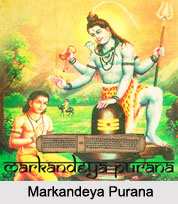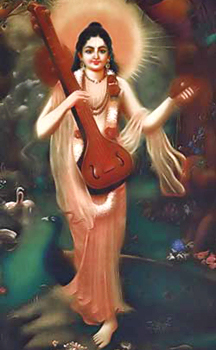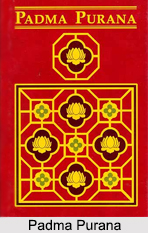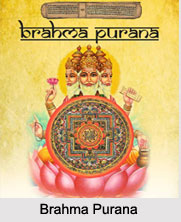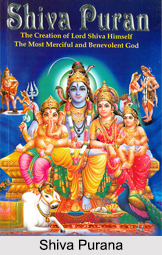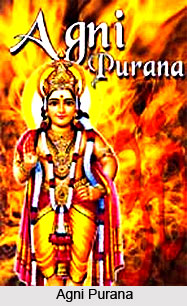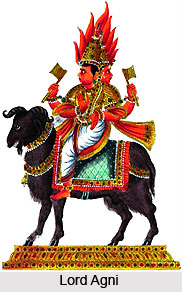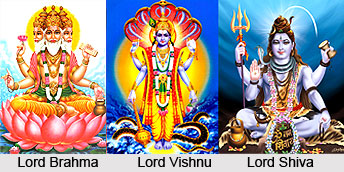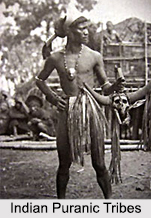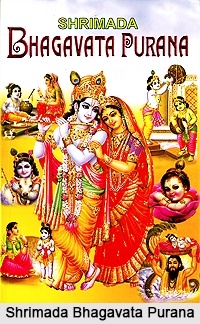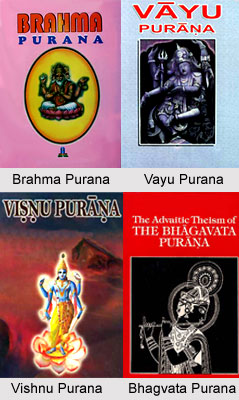The God of Fire in Agni Purana has dealt with the rite of Rudra Vidhanam, which consists of five groups of ceremonies, and a performance whereof, is potent enough to grant all sorts of bliss. The first step in the rite of Rudra Vidhanam involves rite of Nyasa. The Mantra which occupies the rite of Nyasa is known as the Shiva-Sankalpa. It should be contemplated as permeating the region: of the heart, the Vedic verses known as the Pourusha Sukta, should be deemed as its Shiva, or the presiding deity, the Mantra known as the Sambhrita Sukta, as permeating the tuft of hairs on the crown, the Mantras known as the Ashuh as serving the purpose of an armour. These together with the Shata-Rudriya Mantras form, as it were, the five members of the body of the Rudravidhanam.
Agni Purana says that having practised the rite of Nyasa as indicated, the votary, should repeat, in due succession, the different Mantras sacred to the god Rudra, the first of which consists of the Sukta running as Yajjagrata, etc., and of the Ricks such as the Yadricham Manasam Vidu, etc. The Rishi, or the composer of the verses, is Shiva-Shankalpa, and its metre is Tristhubha. The Rishi of the Suktas running as the hundred-headed Lord Shiva (Shiva-Sahasra Shirsha), etc., is Narayana. The metre of the verses is Anusthup, and its presiding deity is Purusha. The Rishi, or the composer of the verses running as Abhyashra-Sambhritam, etc., is Uttara Gonara, while as regards metric composition they belong to the class of Traisthubha.
The metre of the first three verses is Tristupa, while the other two belong to the Anustapa class of metrical composition. The last verse follows the rules of the Traisthubha and owns the god Purusha, as its tutelary divinity. The twelve verses, from the one commencing as Ashurindra, etc. belong to the Traistuva class of metrical compositions, while the name of the Rishi, or the rhapsodist, who first sang the Suktas, known as the Saptadasharchika is Pratiratha. The verses are presided over by different deities, while the god Puruvid should be deemed as an Angadevata. The verses which are sacred to the remaining divinities belong to the Anustapa class of metrical composition. The latter god, together with Yama, Indra, Bhabitri, etc., is the tutelary gods of the verses, which are controlled by the rules of the metre, known as the Pankti. Each of the Vedic verses of the chapter known as the Rudradhyaya, has its own Rishi, such as Prajapati, etc., while the three verses of Koutsha, lay claim to no less than divine authorship.
Agni Purana states that the god Rudra is the tutelary divinity of the two verses running as Manas etc., while the first Anuvak, and should be considered as under the direct control of the god Eka-Rudra. The metre of the first verse is Gayatra, while the next three Rikas belong to the Anustup class of metrical composition. The metre of the next three is Pankti, while the rest belong to the Anustup class. The metre of the two of the verses of the Anuvaka, is Jagati, while the five Riks, such as the Heranya Vahana, etc., own the god Rudra, as their presiding deity. The presiding deity of the verses which constitute the twentieth division of the Shukta, is Rudra. The metre of the first of these verses is Vrihati, the second is a Rik, followed by three verses of the metre Jagati, while the third belongs the Thristubha class of metrical composition, followed by the four Yajur Mantras of the Anustup metre. The man who is conversant with these Rik Mantras, and Aryas, attains all sorts of supernatural power, and acquire a perfect control over the elements.
It has been said that the Trailokya Mohana Mantra and the Nrisinha Mantra consists of eight and twelve letters, are sure to act as antidotes of all sorts of venom and distemper. The manifestations of the Supreme Goddess, such as Kuvjikaj Tripura, Gouri, and Chandrika, should be worshipped for the subsidence of effects of all sorts of poison in the system, and similarly the Mantras respectively sacred to them, or those held specially sacred to the Sun-God, or to the Rudras, or to the Vinyakas, should deemed as possessed of like virtues.

